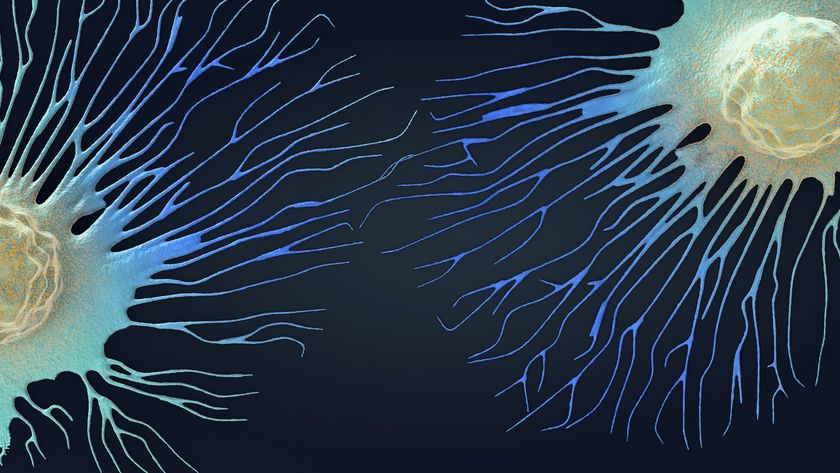Tail of the Tadpole: Frog May Teach Humans How to Regrow Limbs
People with severed limbs, spinal cord injuries and other traumatic wounds may someday be able to regrow lost nerves and tissue with the help of sodium, a new study suggests.
By using drugs to prompt a flood of sodium ions into injured nerve cells, biologists from Tufts University were able to regenerate severed tadpole tails complex appendages containing spinal cord, muscle and other tissue. The study will be published tomorrow (Sept. 29) in the Journal of Neuroscience.
"We certainly feel this will be relevant for human medicine," said lead researcher Michael Levin, the director of the Center for Regenerative and Developmental Biology at Tufts. "The name of the game is to control the ionic content of the wound, which is able to kick-start the whole process of regeneration. You can initiate the whole cascade of repair."
Like humans, who can regrow fingertips only as children, tadpoles lose the ability to regenerate their tails with age, the researchers said. In this study, so-called refractory tadpoles, which normally cannot regrow their tails, began growing a duplicate after an hour-long infusion of a specific combination of drugs.
The frog tail is a good model for human regeneration, Levin said, because it repairs injury in the same way, with each tissue making more of itself. Tail regeneration takes about seven days for both young and sodium-treated refractory tadpoles, he said.
It was important to note, the researchers said, that the tadpoles could regenerate their tails as late as 18 hours after amputation, after a scar-like lesion had formed. This could have significant implications for treating wounds sustained in war, and may be applicable to many complex organs and tissues.
"You always want to get to the patient as early as possible," Levin told MyHealthNewsDaily. "The question is, how late will this work? We don't know. My guess is that with appropriate treatment of the wound, we'll be able to kick-start regeneration."
Sign up for the Live Science daily newsletter now
Get the world’s most fascinating discoveries delivered straight to your inbox.
Levin said the method breaks new ground in biomedicine because it requires no gene therapy, which attempts to cure diseases or regrow tissue by inserting normal DNA into cells.
Even without knowing every mechanism the animal's cells need to build a tail, the researchers can give the cells the signals they need to start the process, Levin said, and the tadpole takes things from there.
"The use of electrical signals to enhance regeneration is applicable to every species," he said. "Any organism knows what shape it should be, and it takes steps to get back to where it used to be."
Though he could not predict when, Levin said he envisions a day when people with traumatic injuries can regrow their lost parts by having them bathed in specific fluids and bioelectronics. In the case of severed arms or legs, for example, a container could be affixed over the wound to achieve this, he said.
Levin said this tissue regrowth method could be simpler and more effective than others under research, such as the use of stem cells.
"Using stem cells is like having a big box of parts," he said. "But how do you arrange stem cells into a 3-D structure? We're nowhere near ready to do that."
The study was funded by the National Institutes of Health, the National Highway Safety Administration, the Department of Defense and the Defense Advanced Research Projects Agency.












